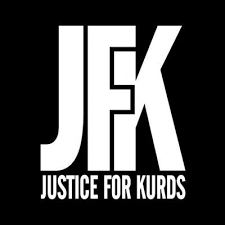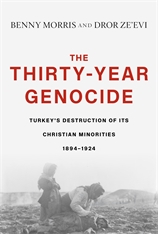 Is “Never Again” just a slogan or a genuine call to action; could genocide happen again, and where? ask Bernard-Henri Lévy and Thomas S. Kaplan, co-founders of Justice for Kurds (JFK).
Is “Never Again” just a slogan or a genuine call to action; could genocide happen again, and where? ask Bernard-Henri Lévy and Thomas S. Kaplan, co-founders of Justice for Kurds (JFK).
With Turkey’s assault on the Syrian Kurds raising the spectre of ethnic cleansing, and Iran threatening to annihilate Israel, they honor the living memory of those lost to genocide and discuss how victims’ legacies can be perpetuated to new generations (Mon, Nov 4, 2019, 7:30 pm: RSVP).
This week’s House of Representatives’ resolution acknowledging the Ottoman Empire’s killing of more than one million Armenians as “genocide” is a reminder of how important truth-telling is to American foreign policy, and how ultimately self-defeating it is for the United States to bend to autocratic pressure tactics, whether from Turkey or anywhere else, says the author of “The Education of an Idealist: A Memoir.”
 The road to the House resolution offers two lessons that go beyond the United States and Turkey, she writes for the Times:
The road to the House resolution offers two lessons that go beyond the United States and Turkey, she writes for the Times:
- First, as a baseline rule, for the sake of overall American credibility and for that of our diplomats, Washington officials must be empowered to tell the truth. Over many years, because of the fear of alienating Turkey, diplomats have been told to avoid mentioning the well-documented genocide. In 2005, when John Evans, the American ambassador to Armenia, said that “the Armenian genocide was the first genocide of the 20th century,” he was recalled and forced into early retirement. Stating the truth was seen as an act of subordination.
- Second, when bullies feel their tactics are working, they generally bully more — a lesson worth bearing in mind in responding to threats from China and Saudi Arabia. The Turkish government devotes millions of dollars annually to lobbying American officials and lawmakers: more than $12 million during the Obama administration…RTWT
Between 1894 and 1924, three waves of violence swept across Anatolia, targeting the region’s Christian minorities, who had previously accounted for 20 percent of the population, GWU’s Institute for Middle East Studies adds. By 1924, the Armenians, Assyrians, and Greeks had been reduced to 2 percent. Most historians have treated these waves as distinct, isolated events, and successive Turkish governments presented them as an unfortunate sequence of accidents. The Thirty-Year Genocide is the first account to show that the three were actually part of a single, continuing, and intentional effort to wipe out Anatolia’s Christian population.
 The years in question, the most violent in the recent history of the region, began during the reign of the Ottoman sultan Abdulhamid II, continued under the Young Turks, and ended during the first years of the Turkish Republic founded by Ataturk. Yet despite the dramatic swing from the Islamizing autocracy of the sultan to the secularizing republicanism of the post–World War I period, the nation’s annihilationist policies were remarkably constant, with continual recourse to premeditated mass killing, homicidal deportation, forced conversion, mass rape, and brutal abduction. Revelatory and impeccably researched, Benny Morris and Dror Ze’evi’s account is certain to transform how we see one of modern history’s most horrific events.
The years in question, the most violent in the recent history of the region, began during the reign of the Ottoman sultan Abdulhamid II, continued under the Young Turks, and ended during the first years of the Turkish Republic founded by Ataturk. Yet despite the dramatic swing from the Islamizing autocracy of the sultan to the secularizing republicanism of the post–World War I period, the nation’s annihilationist policies were remarkably constant, with continual recourse to premeditated mass killing, homicidal deportation, forced conversion, mass rape, and brutal abduction. Revelatory and impeccably researched, Benny Morris and Dror Ze’evi’s account is certain to transform how we see one of modern history’s most horrific events.
“The Thirty-Year Genocide: Turkey’s Destruction of Its Christian Minorities, 1894-1924” with authors Benny Morris and Dror Ze’evi.
Friday November 1st, 12:00 p.m. – 1:00 p.m.
Elliott School of International Affairs
1957 E St. NW Room 505. RSVP
 The Srebrenica massacre stands as a stark reminder that there are evil people prepared to kill without conscience or mercy if the world stands aside, said Anthony Blinken, Deputy Assistant to the President and National Security Advisor to the Vice President. He recalled the murder of 8,000 Muslim men and boys in the 1995 massacre at a memorial event hosted by the National Endowment for Democracy and the U.S. Holocaust Memorial Museum.
The Srebrenica massacre stands as a stark reminder that there are evil people prepared to kill without conscience or mercy if the world stands aside, said Anthony Blinken, Deputy Assistant to the President and National Security Advisor to the Vice President. He recalled the murder of 8,000 Muslim men and boys in the 1995 massacre at a memorial event hosted by the National Endowment for Democracy and the U.S. Holocaust Memorial Museum.







